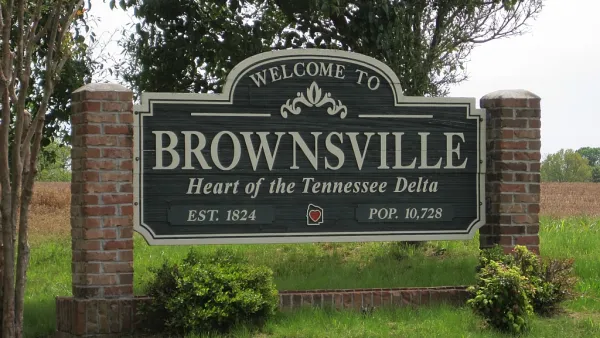A new book posits that truly successful communities have a strong economic base and a firmly rooted sense of place.

A new book by William Fulton outlines a simple equation: “Place plus prosperity equals a successful community.” According to an article by Alan Ehrenhalt in Governing, Fulton’s book examines the “subtle relationship between wealth and sense of place.” Many American communities, Ehrenhalt argues, have one or the other, but not both.
For Fulton, “A fully realized city needs to contain all the benefits of an integrated urban existence: close proximity of its citizens to the fulfilment of their ordinary human needs, the ability to walk and bike everywhere, an efficient transit system and a rich tapestry of everyday urban life.”
Ehrenhalt writes, “What is crucial on the prosperity side, Fulton believes, is a business base that builds on the tenets of place that lie beneath commercial prosperity.” Meanwhile, “The sense of place can be, and most often is, the product of a slow process of evolution. Or it can result from an intense desire to create something that did not exist before.”
Ehrenhalt provides examples from around the country: built-from-scratch cities like Las Vegas, sprawling suburban landscapes like Southern California, and former industrial powerhouses like Pittsburgh that have reinvented themselves for a new economy. While many places haven’t yet achieved Fulton’s vision, Ehrenhalt writes that the experiments happening in cities and towns all over the United States shows that identity and prosperity can go hand in hand.
FULL STORY: Place and Prosperity: An Urban Success Formula

National Parks Layoffs Will Cause Communities to Lose Billions
Thousands of essential park workers were laid off this week, just before the busy spring break season.

Retro-silient?: America’s First “Eco-burb,” The Woodlands Turns 50
A master-planned community north of Houston offers lessons on green infrastructure and resilient design, but falls short of its founder’s lofty affordability and walkability goals.

Delivering for America Plan Will Downgrade Mail Service in at Least 49.5 Percent of Zip Codes
Republican and Democrat lawmakers criticize the plan for its disproportionate negative impact on rural communities.

Test News Post 1
This is a summary

Test News Headline 46
Test for the image on the front page.

Balancing Bombs and Butterflies: How the National Guard Protects a Rare Species
The National Guard at Fort Indiantown Gap uses GIS technology and land management strategies to balance military training with conservation efforts, ensuring the survival of the rare eastern regal fritillary butterfly.
Urban Design for Planners 1: Software Tools
This six-course series explores essential urban design concepts using open source software and equips planners with the tools they need to participate fully in the urban design process.
Planning for Universal Design
Learn the tools for implementing Universal Design in planning regulations.
EMC Planning Group, Inc.
Planetizen
Planetizen
Mpact (formerly Rail~Volution)
Great Falls Development Authority, Inc.
HUDs Office of Policy Development and Research
NYU Wagner Graduate School of Public Service




























